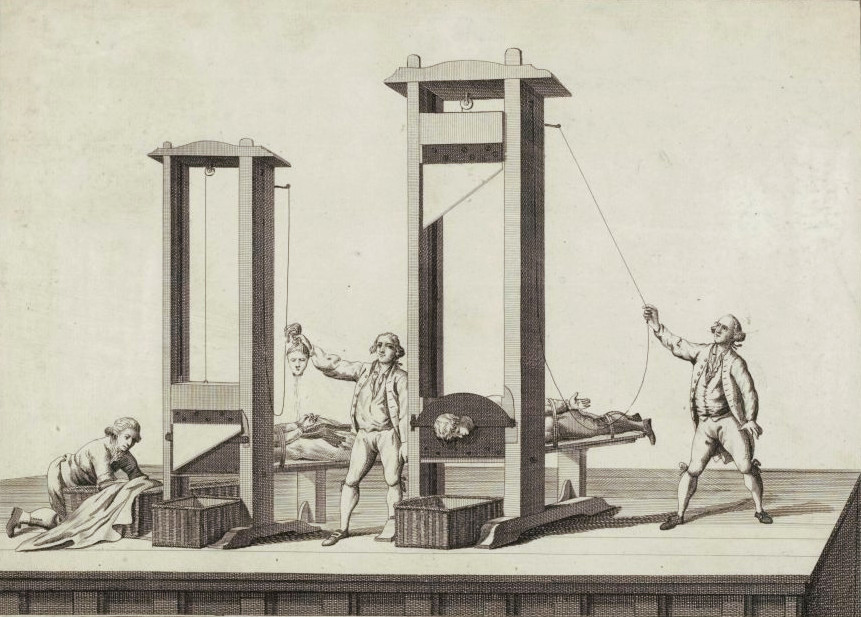- In 1789, Doctor Joseph-Ignace Guillotin suggested a more humane way of executing people. At the time, the lower classes were hanged and upper class were beheaded with a sword or axe. Both methods could result in considerable pain before the victim expired. Beheadings relied on the accuracy of the executioner and it was not unusual for more than one whack to be needed.
- Guillotin supervised the building of the first model. It was designed by a Doctor Antoine Louis and built by a harpsichord maker named Tobias Schmidt. Guillotin quickly disavowed it, as he was against capital punishment and was aghast when it was named after him.
- It was first used in 1792 to execute a violent criminal named Nicolas Pelletier. The crowd booed because it was too efficient.
- It is most associated with the Reign of Terror. The public quickly decided that quantity was better than quality as far as executions were concerned. (And executioners decided that without it their arms would get really tired.) Large crowds (including children) witnessed the mass executions. Front and center were the “Tricoteuses” (the knitters) who knitted as they watched the enemies of the Revolution lose their heads. Located nearby was the “Cabaret de la Guillotine” if you felt like a bite to eat.
- There were guillotine toys for kids. You could decapitate your doll or rodents. Some tables had a novelty guillotine to cut bread and vegetables.
- Executioners became celebrities. The Sanson family provided the chief executioner from 1792-1847. Charles-Henri Sanson executed Pelletier. A Sanson executed King Louis XVI and Marie Antoinette. Louis and Anatole Deibler held the job from 1879-1939.
- Hitler ordered twenty guillotines and over 16,000 were executed using them. Most were resistance members or political opponents.
- The last public execution using it was in 1939. A huge crowd gathered to revel in the spectacle. When the head came off, some of the crowd charged the platform to dip items in the blood for souvenirs. That was the end of public attendance. It was last used for Hamida Djandoubi for torture and murder on September 10, 1977. Two years later, France banned capital punishment.
- As far as does the victim remain alive briefly after being decapitated, some claimed that when the executioner lifted the head sometimes you could see facial twitches or even blinks. Later experiments involving mice have proved that a head might have as much as 7 seconds of life after being severed.
https://www.history.com/news/8-things-you-may-not-know-about-the-guillotine
https://www.discoverwalks.com/blog/10-grisly-facts-about-the-guillotine/
https://factslegend.org/40-interesting-guillotine-facts/

0 Comments